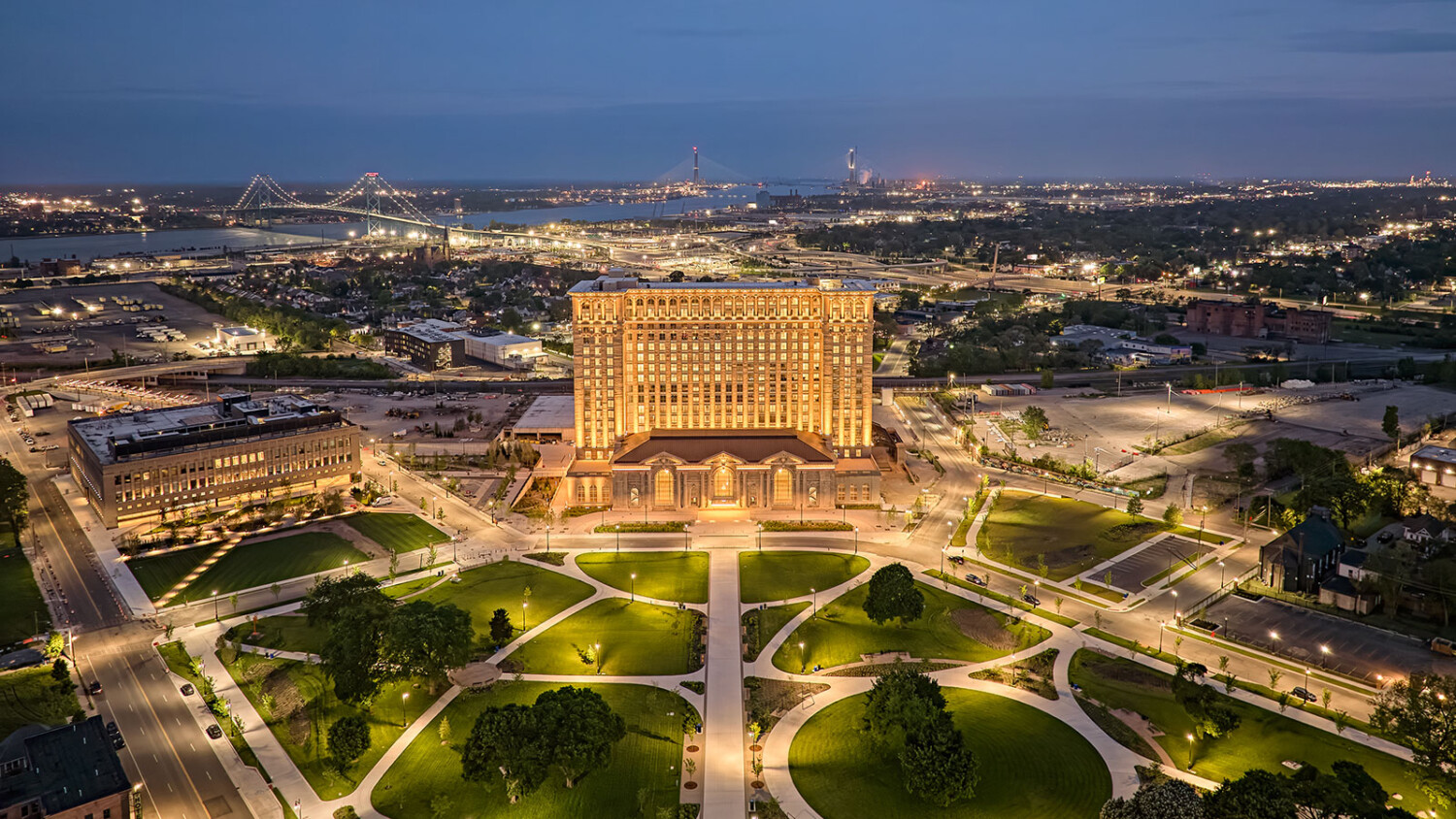Jason Keen Photographs the Revitalization of the Grand Michigan Central Station
We’re back for Project of the Week with Jason Keen and his myriad of photographs of Michigan Central Station! Jason’s photographs delve into the restoration of this symbolic landmark, as he showcases it in – literally – every light. Jason’s shoot includes sweeping aerial views of the station in context of the city, as well as stunning vignettes that translate the storied history and craftsmanship from days of yore.
Jason has so many wonderful images to share. He has also been lovely enough to talk about his shoot day, and break down three of his favorite scenes from this project. With so much to share, I’ll let him take it away!
Jason Keen: “Recently, I had the honor of photographing Michigan Central Station, a deeply symbolic landmark in Detroit. This historic station, once a symbol of the city’s grandeur and later its decline, is now undergoing a multi-phase transformation into an innovation hub for the region. The restoration, led by Ford in collaboration with Quinn Evans Architects and the general contractor Chrisman Brinker, aims to establish a center for Ford’s electric vehicle department and attract a variety of businesses, catalyzing growth, revitalization, and new talent in the area.
To Detroiters, this piece of architecture represents more than just a building. For many years, seeing it on the skyline—degraded, without windows, and abandoned—was a stark reminder of how far their city had fallen. Now, with its restoration, the people of Detroit have a renewed relationship with the station, one that offers hope and optimism for the future.”
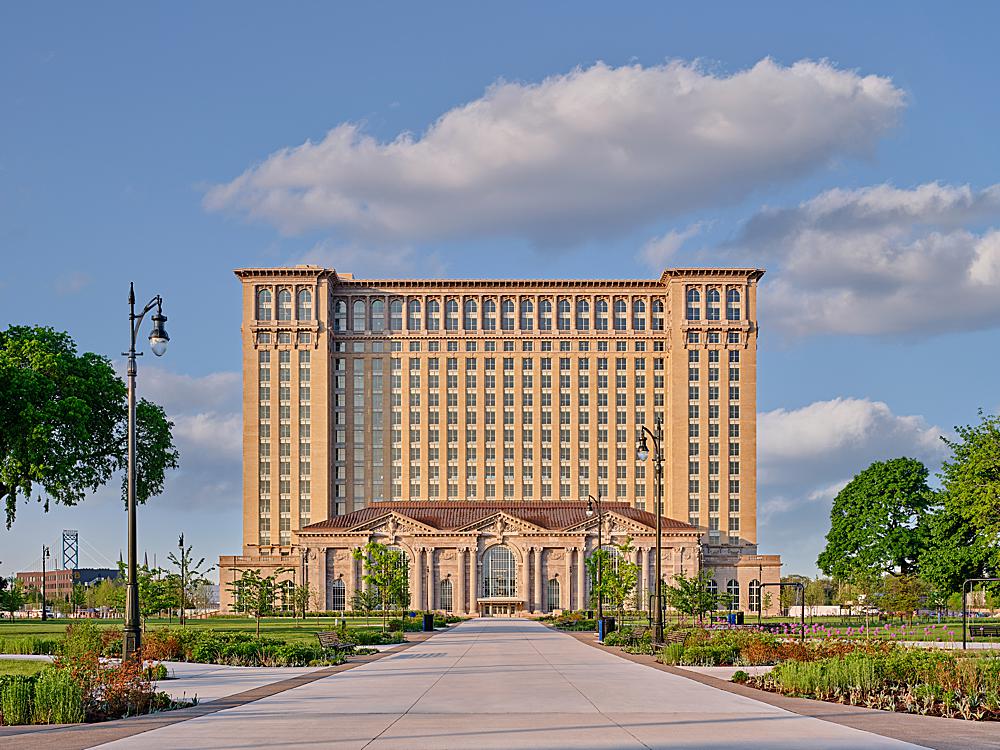
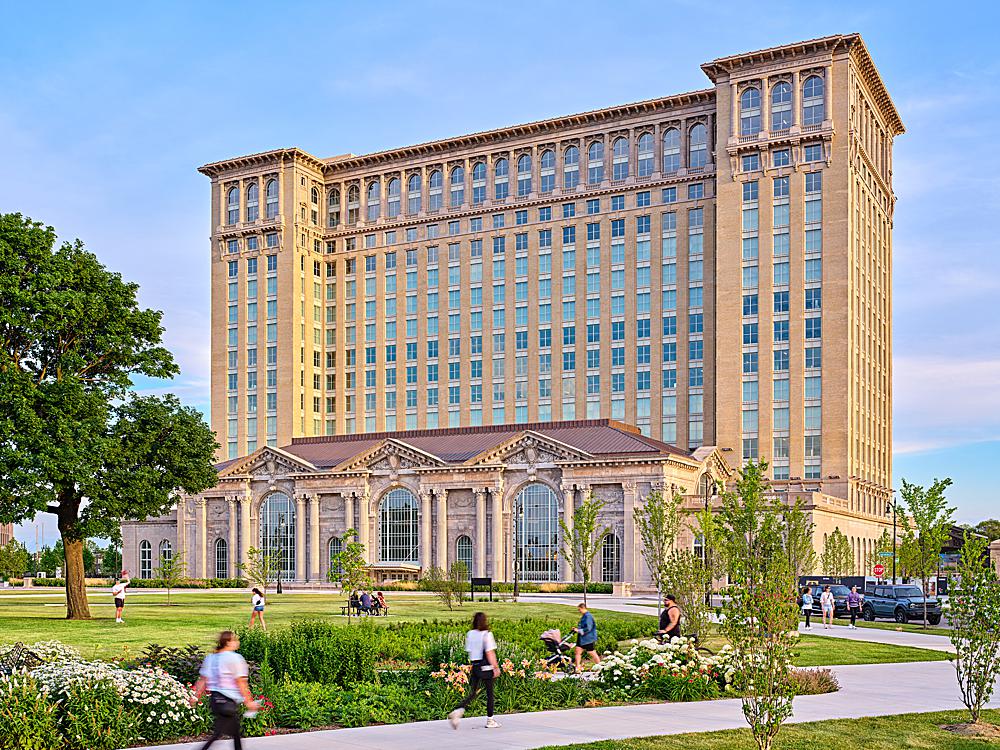
“My role was to capture the station’s transformation while navigating the distinct photography needs of Ford, the architecture partners, and the general contractor. Each had unique content objectives: Ford wanted shots without people to focus on the architecture, while the architecture partners preferred shots that included people to convey the building’s use and atmosphere.
Additionally, the general contractor sought to capture angles that matched historic views from the 1920s, as well as versions of those captured during the construction phases. Repeating these angles posed technical challenges, requiring precise processes to align the images accurately. It was equally important to ensure that the images were not just accurate recreations but also aesthetically pleasing on their own terms.”
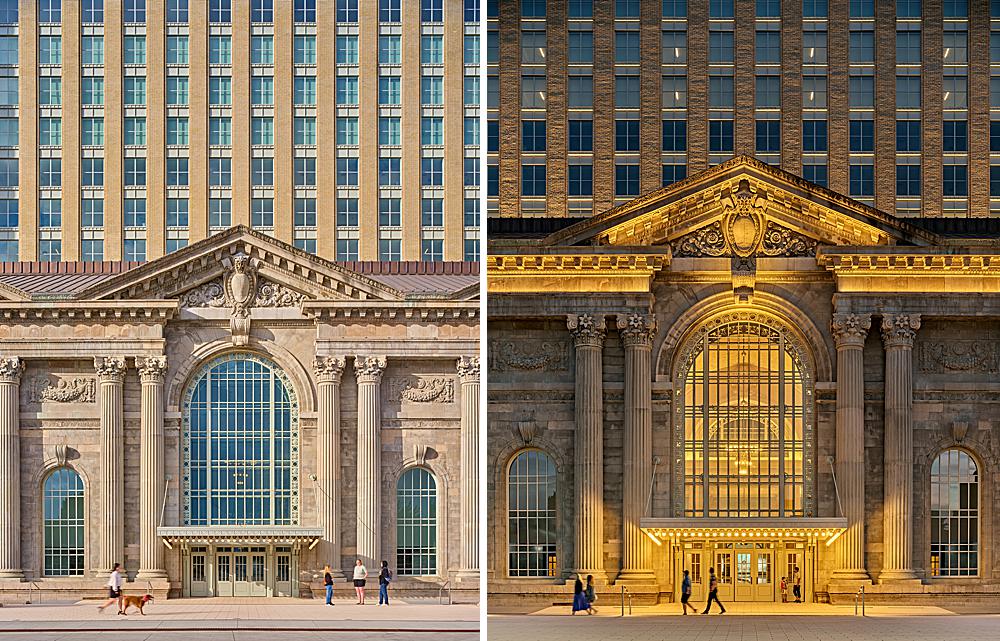
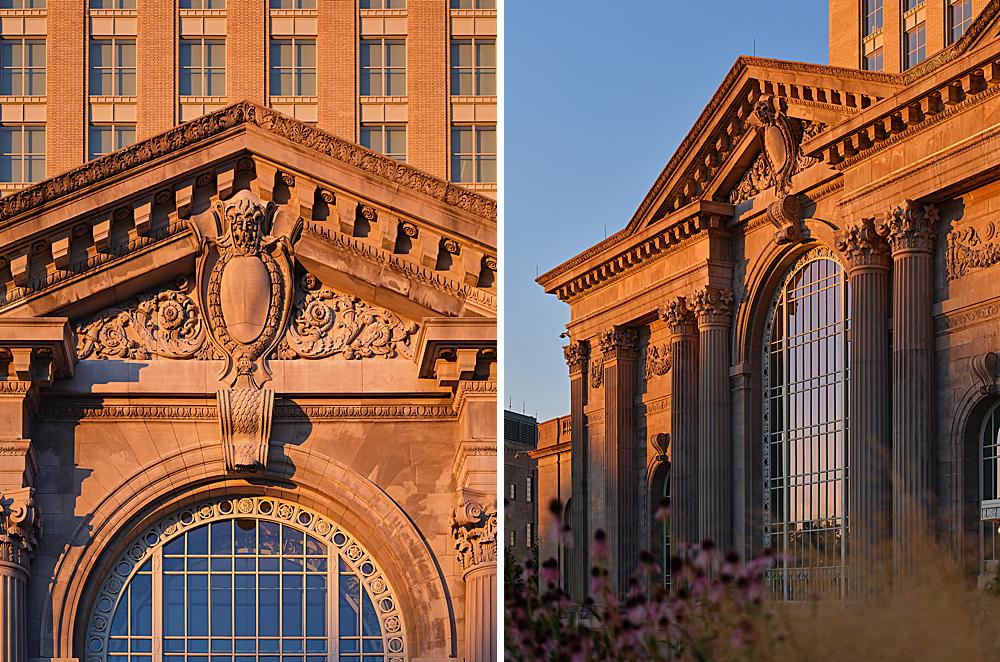
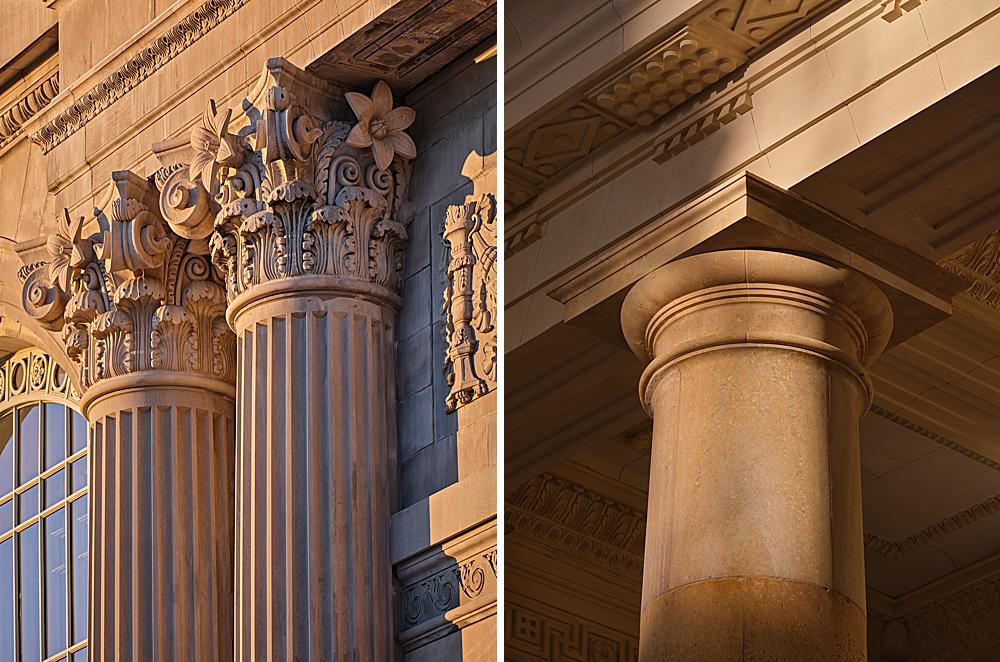
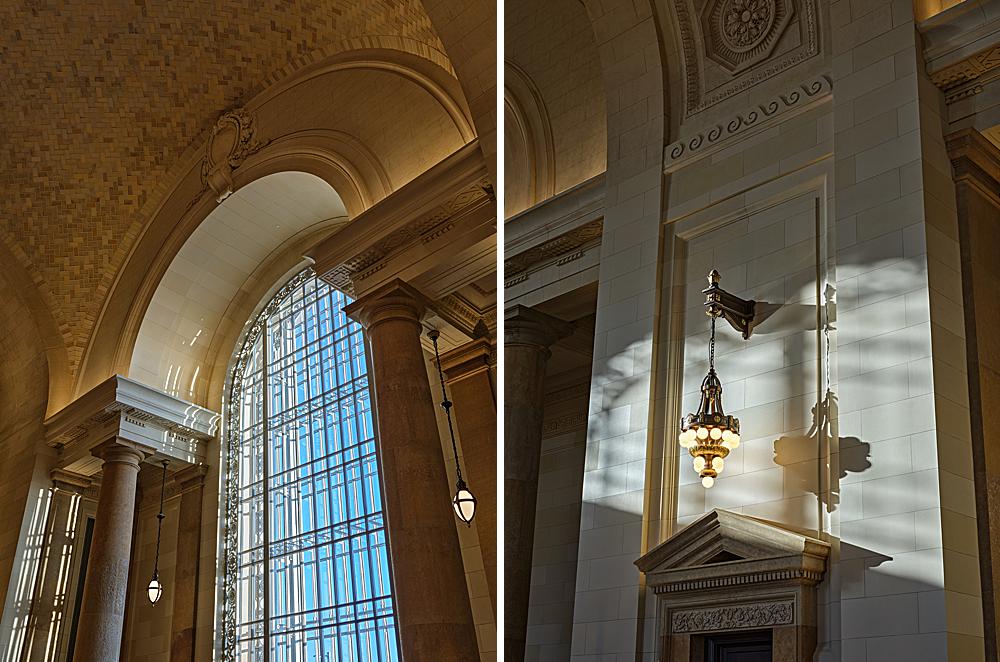
Jason: “The exteriors we did with ‘models’ from the firm [were challenging], but this time, weather was another temperamental factor. The building faces northeast and gets fantastic light from around 6:00 AM to 8:00 AM before the light flattens out and moves south behind the building. We had two days where we arranged for 10-15 models to arrive, only to be clouded in with a forecast that was supposed to be fantastic. We eventually got a great morning to work, and no architects (or their families) tried to harm me in the process…”
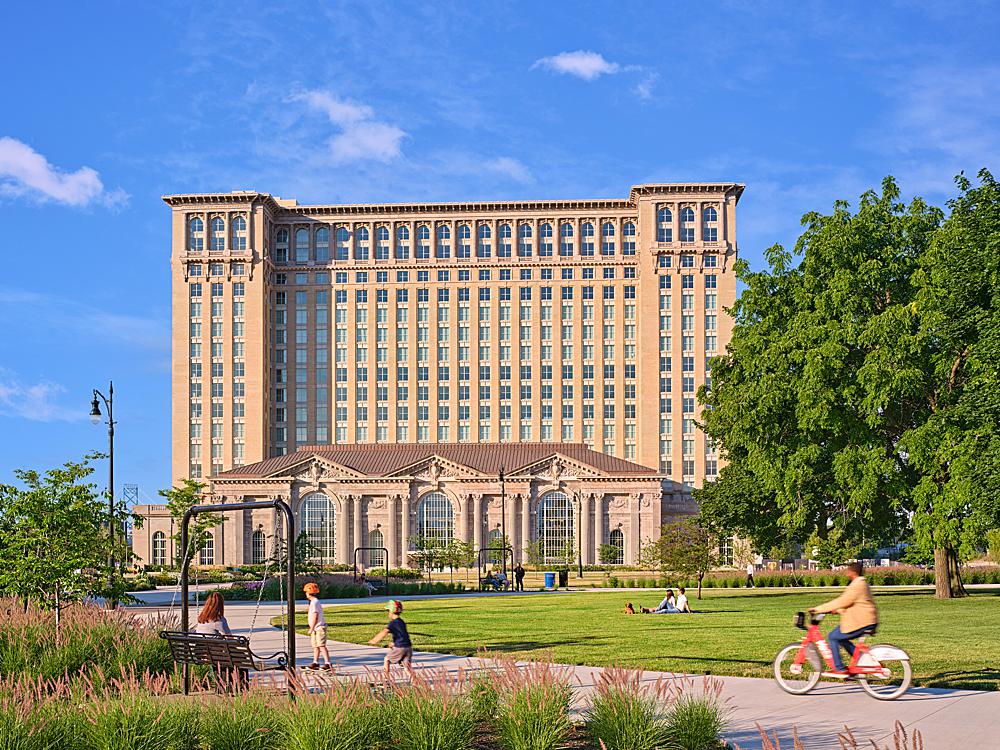
“One of the other challenges was ensuring that images remained unseen in the months leading up to the June 6 embargo date, when the images would be published in the media ahead of the opening concert. Every company and person involved in the photography process had to be very careful about sharing proof sheets, revisions, and final images.
Coordinating between these parties, while managing strict embargoes, usage restrictions, and content needs, required careful planning and communication. Photography was just one piece of the puzzle; they were also producing video content and pushing through the final stages of construction.
This meant we had to be flexible with our schedule to work around construction activities at the station, the surrounding Roosevelt Park, and the neighboring Book Depository development by Ford. The building was surrounded by metal fencing to prevent unauthorized photos, and each time we wanted to shoot, we had to coordinate with security and construction teams to remove the temporary fencing. Often, the weather didn’t cooperate, necessitating multiple attempts. This process became smoother in later photography efforts after the opening.”
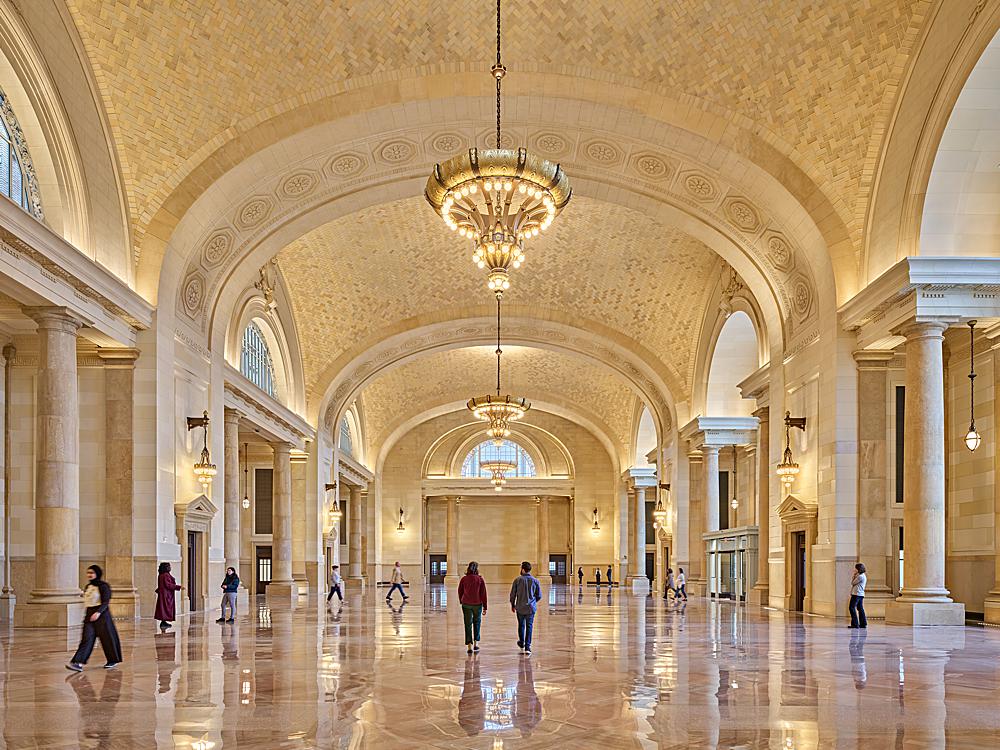
“Photographing the interiors oscillated between calm and stressful sessions over multiple days. When capturing views without people, we were largely left alone, which allowed us to make interesting pictures and respond to the light and architecture—a meditative process. However, the architects also wanted to capture shots with people, and as you can imagine, trying to fill a train station with enough people to make it look populated and authentic was complicated. To do this, the firm had to bring in around 20-30 employees to model because, prior to June 6’s embargo date, no one was allowed in the station without explicit approval. Thus, we had an army of architecture professionals moonlighting as models.
Communicating in these large spaces was a challenge in itself. When you spoke across these cavernous spaces, all you could hear was the reverb of your own voice. The acoustics were not conducive to directing a large group over a vast space to stand or walk in certain areas for the shots. Additionally, we had limited time with them, so we were always racing against the clock, working as quickly and efficiently as possible to meet the needs of the shot list. Moreover, the interior lighting design was not fully finalized, causing lights to flicker on and off and change color temperature. It is not uncommon for architectural photographers to be capturing a project quite early under conditions that may not exactly be ideal – construction punch list, lighting issues, landscaping readiness, etc. At the end of the day, it all worked out, but like any architectural shoot with models, you’re never quite sure you’re going to succeed and get everything on your list, and on this project, it was crucial that we had a compelling and thorough body of work for press kits so we had to hustle and make up for lost time.”
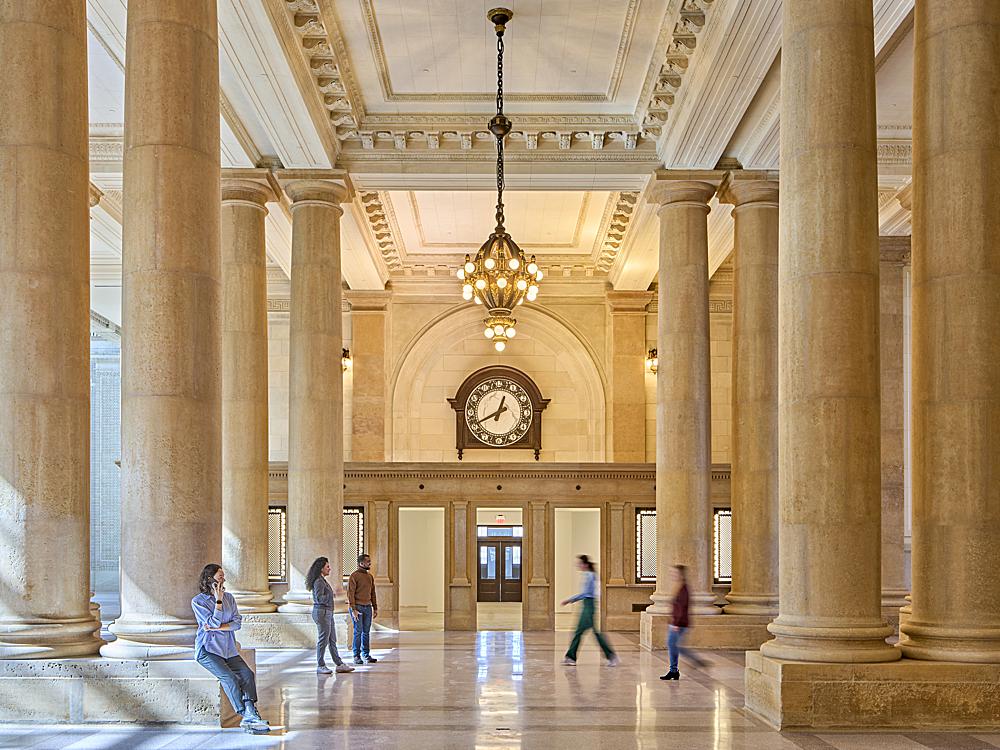
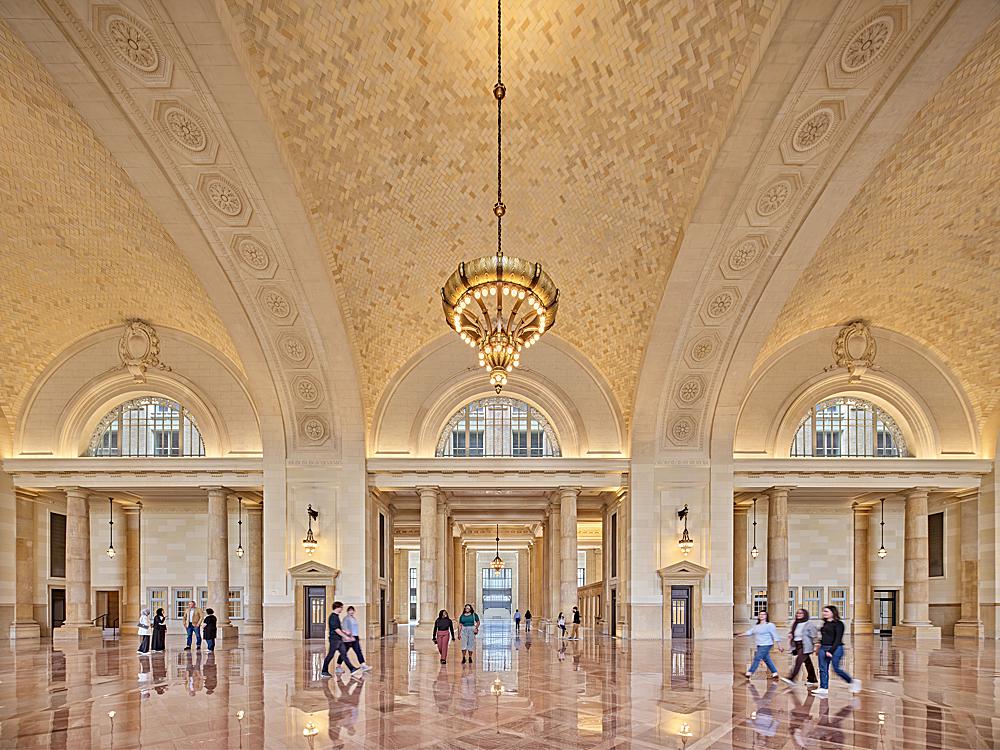
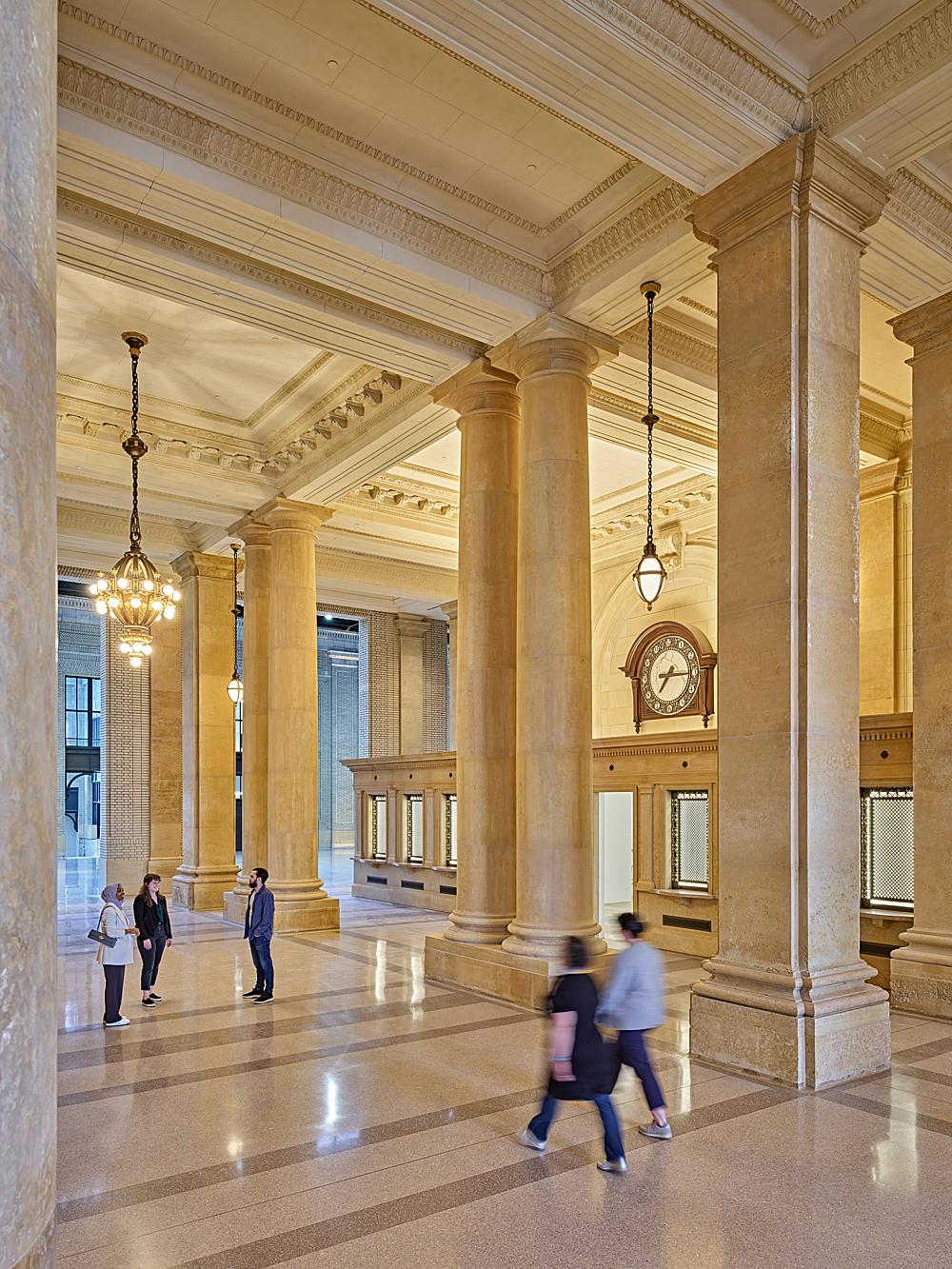
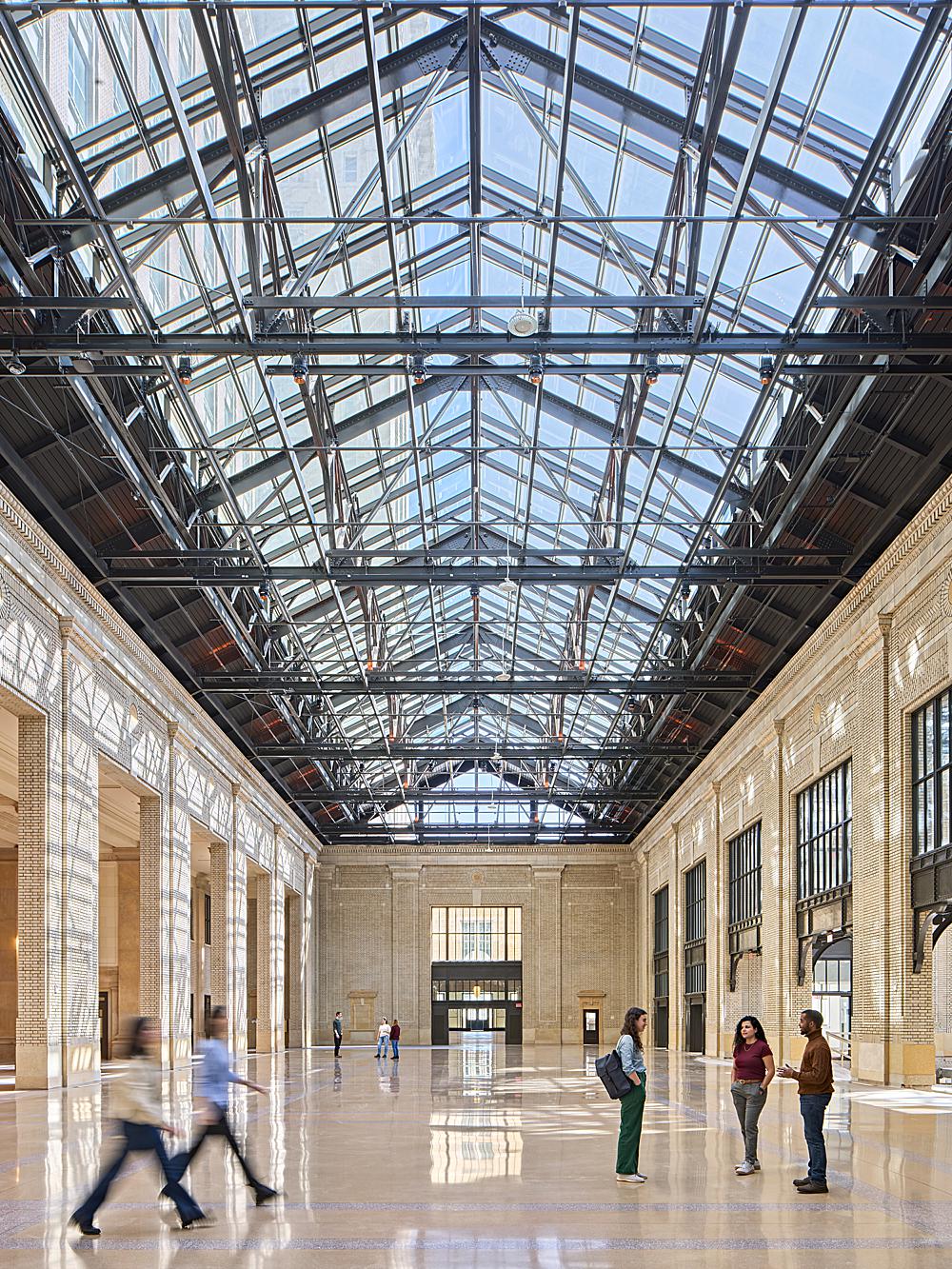
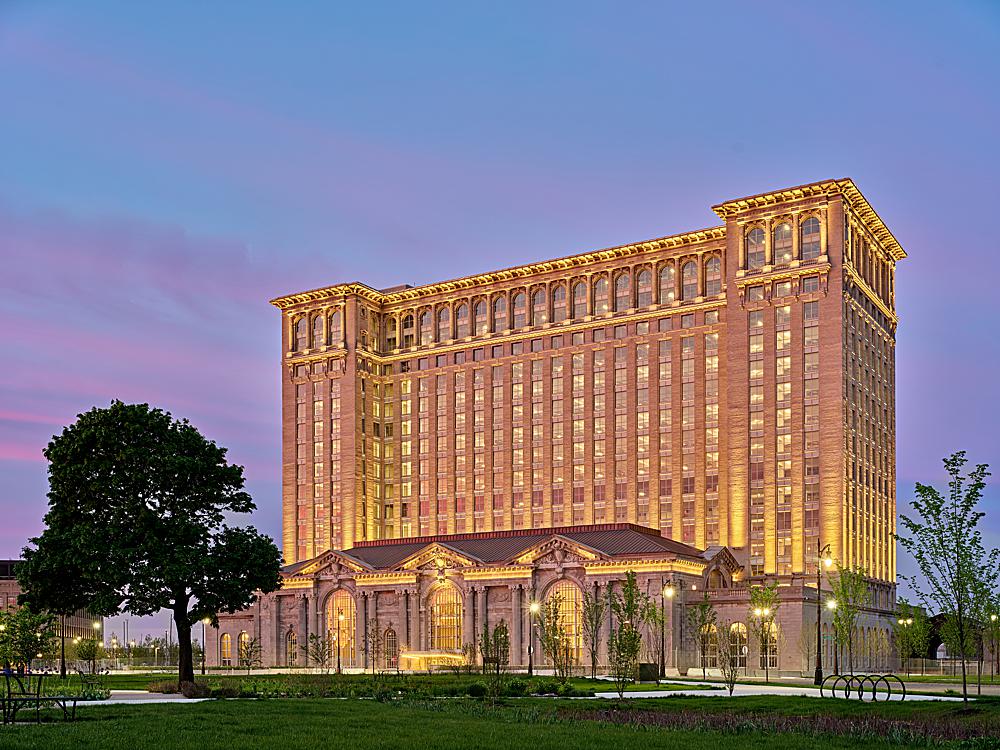
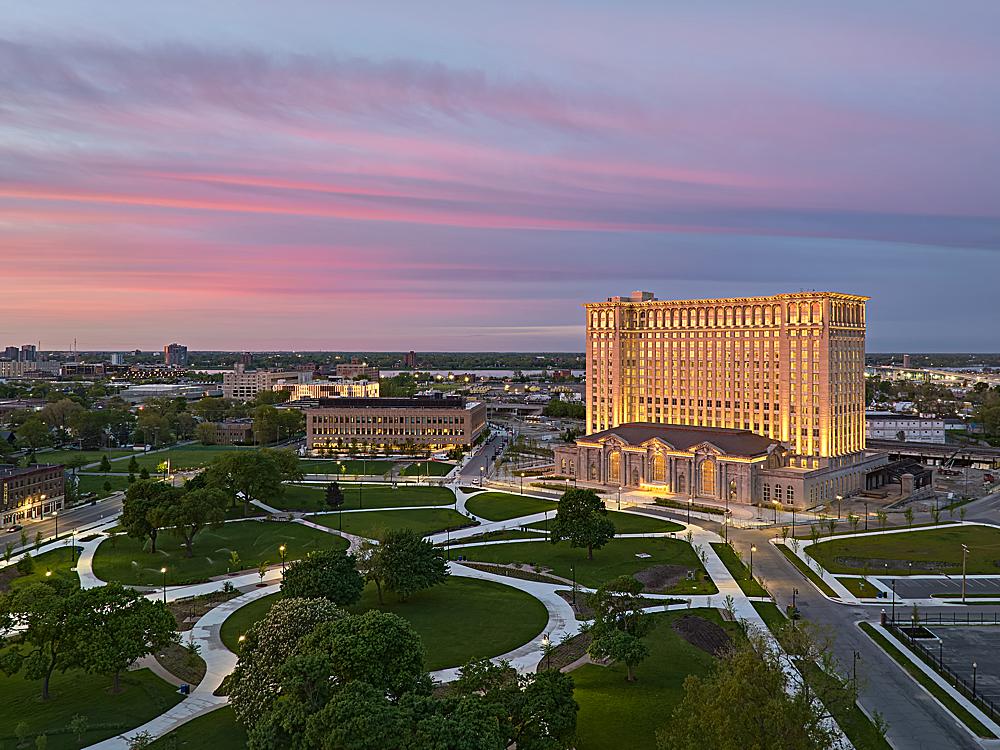
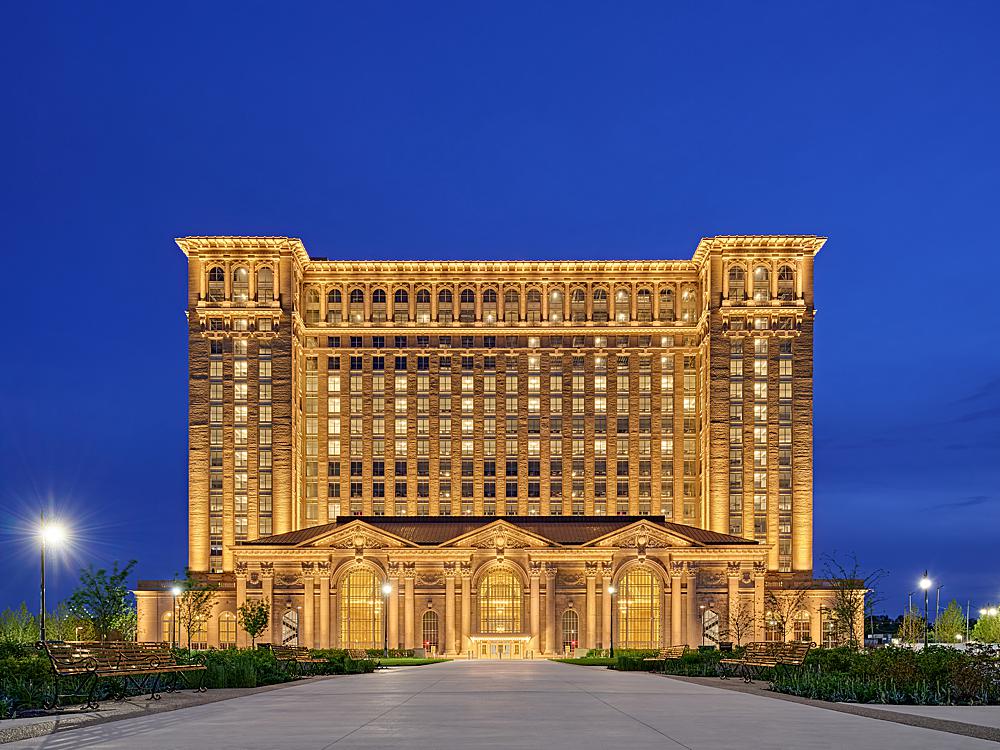
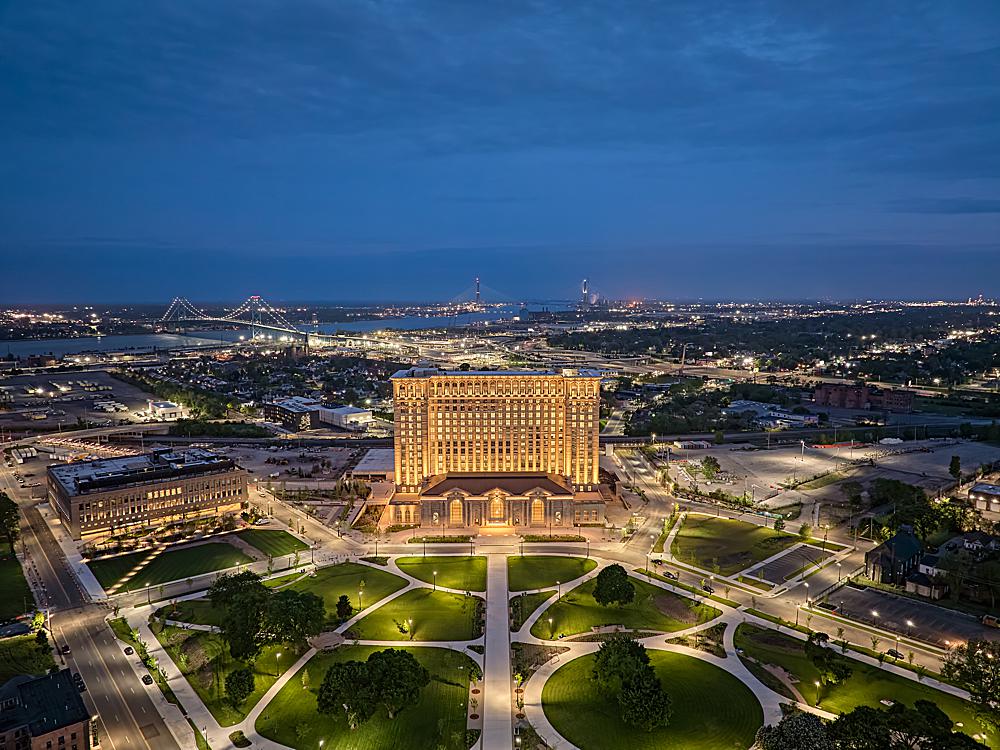
“This aerial shot is one of my favorites because of its tonal qualities and the mood captured at that moment. It was taken during a particularly dramatic sunset, with massive, fast-moving clouds that resembled mountains in their size and texture. The sky had a golden yellow hue, rather than its usual blue, which beautifully complemented the station’s stone exterior.
The result was a rich, amber palette that imbued the image with a sense of nostalgia. The station, which faces northeast, received direct sunlight on its facade for only about five minutes, as we were a few weeks beyond the summer solstice. In the image, you can see how the building is divided by light and shadow, with the lighting changing moment by moment. We had to act quickly to capture this moment with the drone, and fortunately, the light cooperated perfectly, resulting in this shot, which stands out as one of my favorites from the project.”
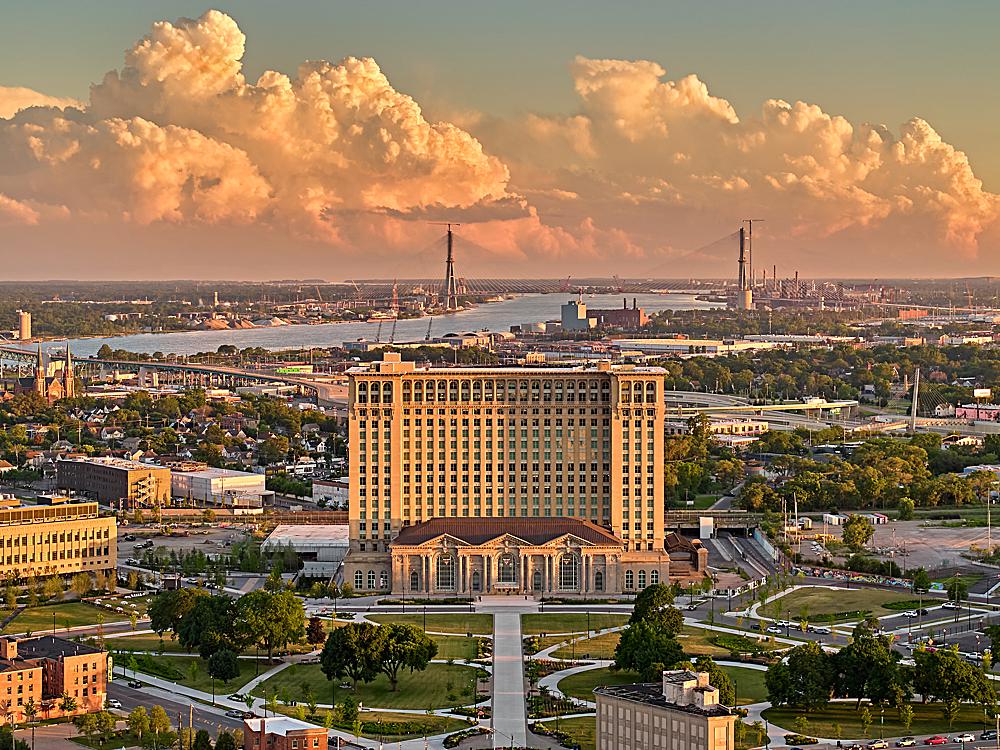
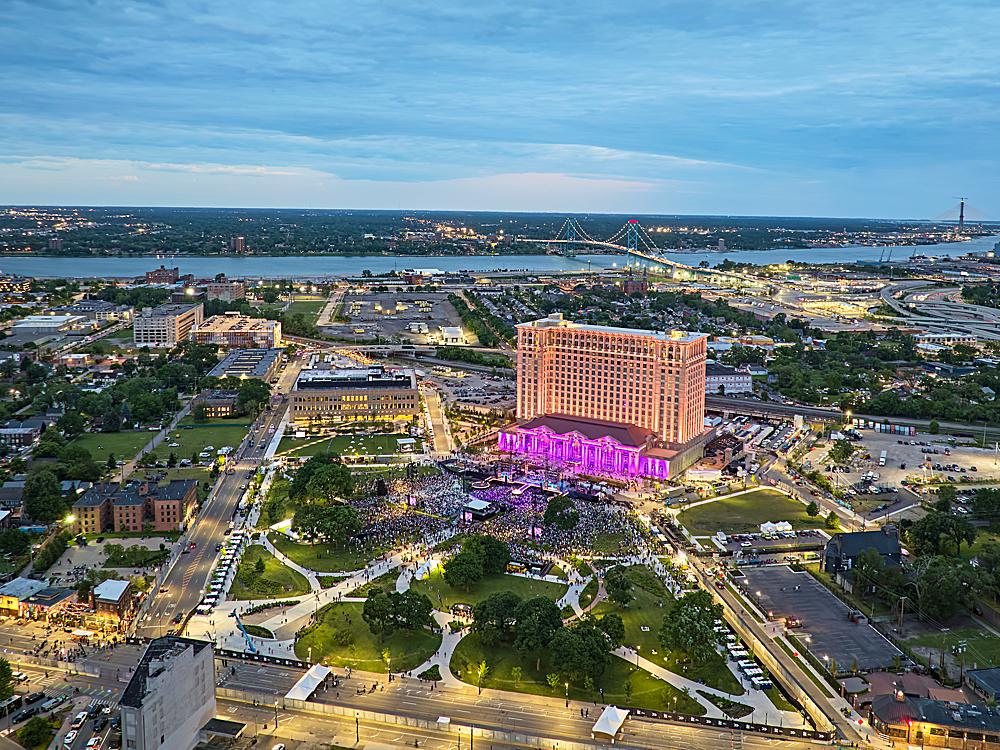
“This project holds a special place in my heart, as it does for many Detroiters. Michigan Central Station is more than just a building; it is a symbol of Detroit’s resilience and rebirth.”
A massive thanks to Jason for sharing this project and its story with us!
Head over to jasonkeen.com to see more of Jason’s work. You can also catch him on Instagram @jasonkeenco.
If you have a project you’d like to be considered for Project of the Week, you can submit it here.
